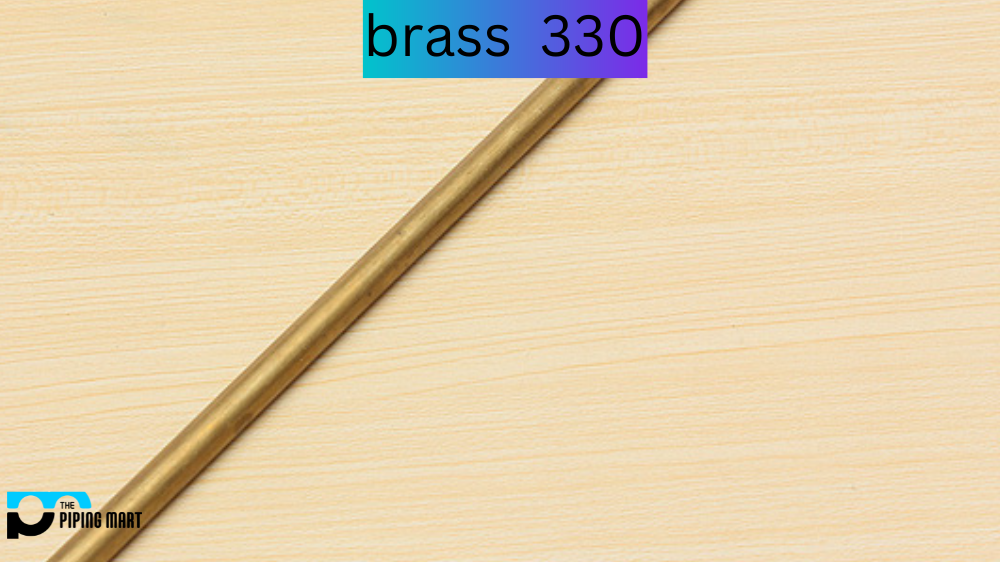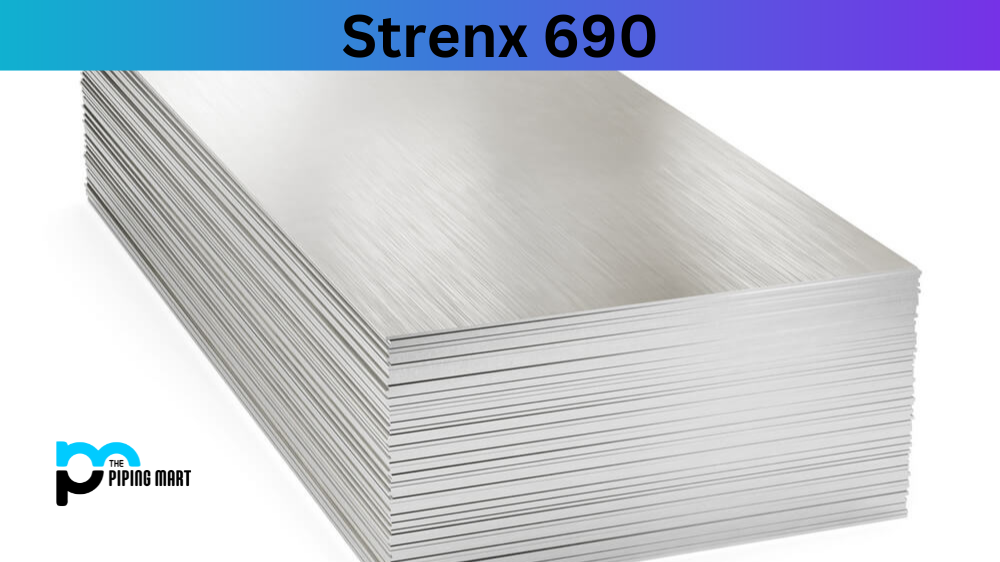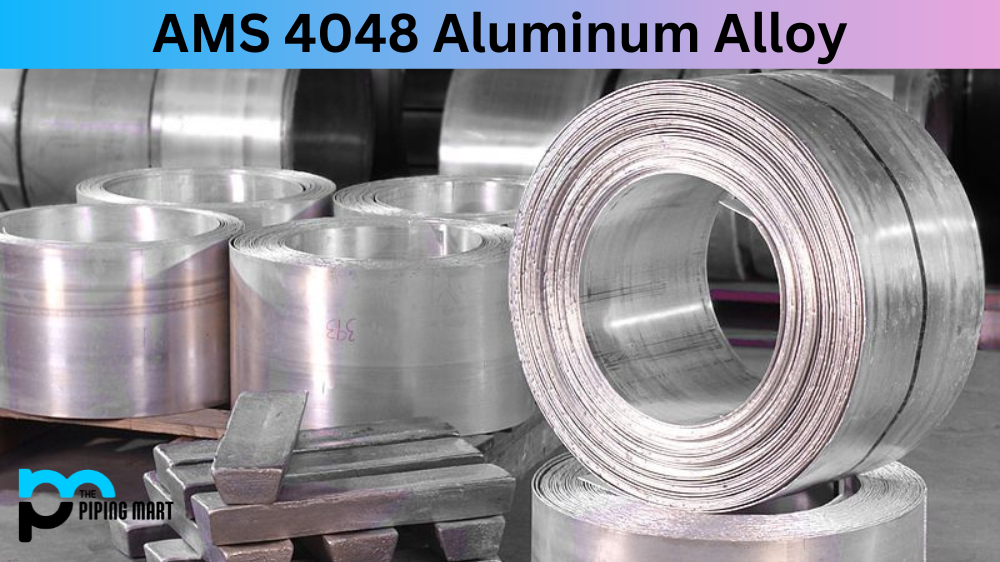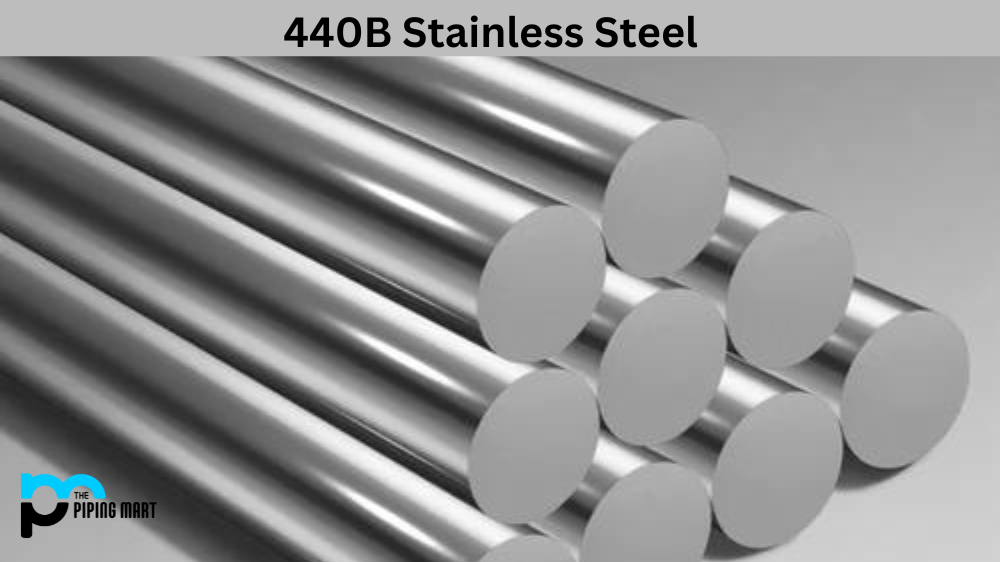Are you curious about what makes UNS C33000 so unique? This alloy is an excellent choice for various projects due to its unique properties. It combines the strength of copper with the durability and corrosion resistance of zinc, making it a great material for many different applications. Let’s take a look at what makes Brass 330 so versatile and reliable.
330 Brass Composition
UNS C33000 is an alloy composed primarily of copper and zinc. The alloy typically contains around 60-70% copper and 30-40% zinc, creating a strong and durable material with excellent wear and superior corrosion resistance. Other trace elements may also be added to enhance certain properties, such as heat resistance or machinability.
|
Element
|
Percentage
|
| Cu | 66 |
| Pb | 0.5 |
| Zn | 33.5 |
330 Brass Chemical Properties
The chemical composition of UNS C33000 provides it with excellent corrosion resistance as well as superior mechanical properties, including high tensile strength and ductility.
330 Brass Mechanical Properties
In addition, this alloy has good heat resistance, allowing it to maintain its strength even under high temperatures. Its physical properties make it an ideal choice for various applications such as valves, pumps, fasteners, electrical components, fittings, and more.
| Temper | Tensile Str. | Yield Str. | Elong. | Rockwell | |||
|---|---|---|---|---|---|---|---|
| B | C | F | 30T | ||||
| OS025 | 359 MPa (52 ksi) | 138 MPa (20 ksi) | 50% | – | – | 75 | 37 |
| OS050 | 324 MPa (47 ksi) | 103 MPa (15 ksi) | 60% | – | – | 64 | 26 |
330 Brass Physical Properties
UNS C33000 is an alloy composed primarily of copper and zinc that offers a combination of desirable physical properties. With high ductility and strength, as well as good wear resistance, Brass 330 is often used in products such as valves, marine hardware, pump parts and musical instrument components, to name a few. Its natural patina enhances its corrosion resistance, meaning it will not corrode or wear away quickly over time. In addition to its mechanical properties, Brass 330 has excellent wearability and plating qualities. This makes it a great choice for electrical applications where good contact between two surfaces needs reliable conductivity. Nothing short of impressive when evaluating the physical properties of Brass 330!
|
Physical Properties 330 Brass
|
|||||
| Density | 0.307 lb/in3 | ||||
| Ultimate Tensile Strength | 65.3 ksi | ||||
| Yield Tensile Strength | 50 ksi | ||||
| Shear Strength | 43.5 ksi | ||||
| Shear Modulus | 5,660 ksi | ||||
| Hardness Rockwell | Brinell | B80 | 147 | ||||
| Elongation at Break Percentage | 32% | ||||
| Modulus of Elasticity | 15,200 ksi | ||||
| Poisson’s Ratio | 0.35 | ||||
| Machinability Percentage | 60% | ||||
| Melting Point | 1,660-1,720 °F | ||||
| Specific Heat | 9.08 x 10^-2 BTU/lb-°F | ||||
| Thermal Conductivity | 798 BTU-in/hr-ft^2-°F | ||||
| Electrical Conductivity | 26% IACS | ||||
330 Brass Equivalent
Equivalent materials to UNS C33000 copper alloy include:
- ASTM B135
- MIL T-46072
- SAE J461
- SAE J463
330 Brass Thermal Properties
The thermal properties of UNS C33000 brass is given below.
| Properties | Metric | Imperial |
|---|---|---|
| Thermal expansion co-efficient (@ 20 – 300°C/68 – 572°F) | 20.2 µm/m°C | 11.2 µin/in°F |
| Thermal conductivity (@ 20°C/68°F) | 115 W/mK | 798 BTU in/hr.ft².°F |
330 Brass Uses
UNS C33000 is a type of brass alloy prized for its numerous uses across various industries. This durable and rust-resistant material has a number of commercial applications, including parts for construction-related items such as window frames, door knobs and curtain rods. It can also be used to create components for certain types of automotive engines and fuel systems, as well as plumbing and water fixtures. Brass 330 is often found in musical instruments like trumpets, flutes and trombones due to its electrical conductivity. All these qualities make Brass 330 an invaluable asset for workers in many different fields who need dependable materials to get the job done.
Welding
Brass 330 is relatively easy to weld with the proper equipment and techniques, making it ideal for applications where welding is necessary. It’s important to note that the weld joint must be properly prepared before welding to ensure maximum strength after welding. This includes cleaning the metal surfaces with a wire brush or other abrasive material and then preheating the metal before welding begins.
Corrosion Resistance
When it comes to holding up against corrosion, Brass 330 is a reliable choice. This type of brass offers great all-around performance in corrosive environments due to its zinc content. It is also noted for its strength, which it maintains even after repeated bending and other mechanical strain. Furthermore, Brass 330 boasts excellent weldability and machinability, making it an ideal metal for many applications, including the production of springs and fasteners. With the proper maintenance and protection, this durable brass alloy will keep your products intact in even the most challenging conditions.
Heat Resistance
For those looking for maximum heat resistance, Brass 330 can be an ideal choice. With a melting point of approximately 2550 degrees Fahrenheit, it is well suited to applications involving intense heat levels. This durable and ductile alloy consists of copper-zinc and offers superior thermal conductivity as compared to other metal alloys. Additionally, its corrosion resistance increases further when gauged with different variations of brass. Because of such advantageous characteristics, Brass 330 has found many applications in industries such as automotive manufacturing and aerospace engineering.
Heat Treatment
Heat treatment of brass 330 is important to ensure that the metal has the desired strength and toughness. Using powerful heating techniques such as induction heating, a layer of oxide can be formed on the surface, acting as an adequate heat-resistive shield. This ensures that the object is heated up evenly and cools down at an acceptable rate so there are no fractures due to rapid cooling. The longer the brass material is exposed to temperatures below 850 degrees Celsius before it returns to its recrystallized state, the stronger and tougher it will become. Heat-treating brass 330 thus ensures improved properties while maintaining desirable chemical composition that adds to its overall durability.
Machining
Brass 330 machining is a precision manufacturing process that creates intricate and complex parts. Brass 330 has an excellent combination of strength and hardness, which makes it ideal for creating components with high mechanical properties and stability. At the same time, its high coefficient of thermal expansion and electrical conductivity make it worthwhile for applications in electronic assemblies. Machining brass 330 requires high-end tools and advanced techniques, such as linear cutting, laser cutting, and EDM machine work, that allow for precise tolerances and detailed features. The end results are consistently strong parts suited for a wide range of uses in numerous industries such as automotive, aerospace, medical device engineering, etc. By successfully machining 330 brass components, manufacturers can ensure their finished products meet the industry’s stringent quality standards.
Conclusion
Overall, Brass 330 is an excellent all-purpose material for many different projects due to its combination of strength, durability, corrosion resistance and heat resistance. Its ease of machining makes it ideal for custom parts while its weldability allows it to be used in applications that require strong joints between parts or components. From valves and pumps to fasteners and electrical components, if you need something tough enough to handle whatever comes your way, Brass 330 can do the job!
Sakshee is a talented blogger, with a particular focus on the Business and Metal Industry. She is passionate about sharing her insights on various metal products and helping professionals to make a better decisions.




